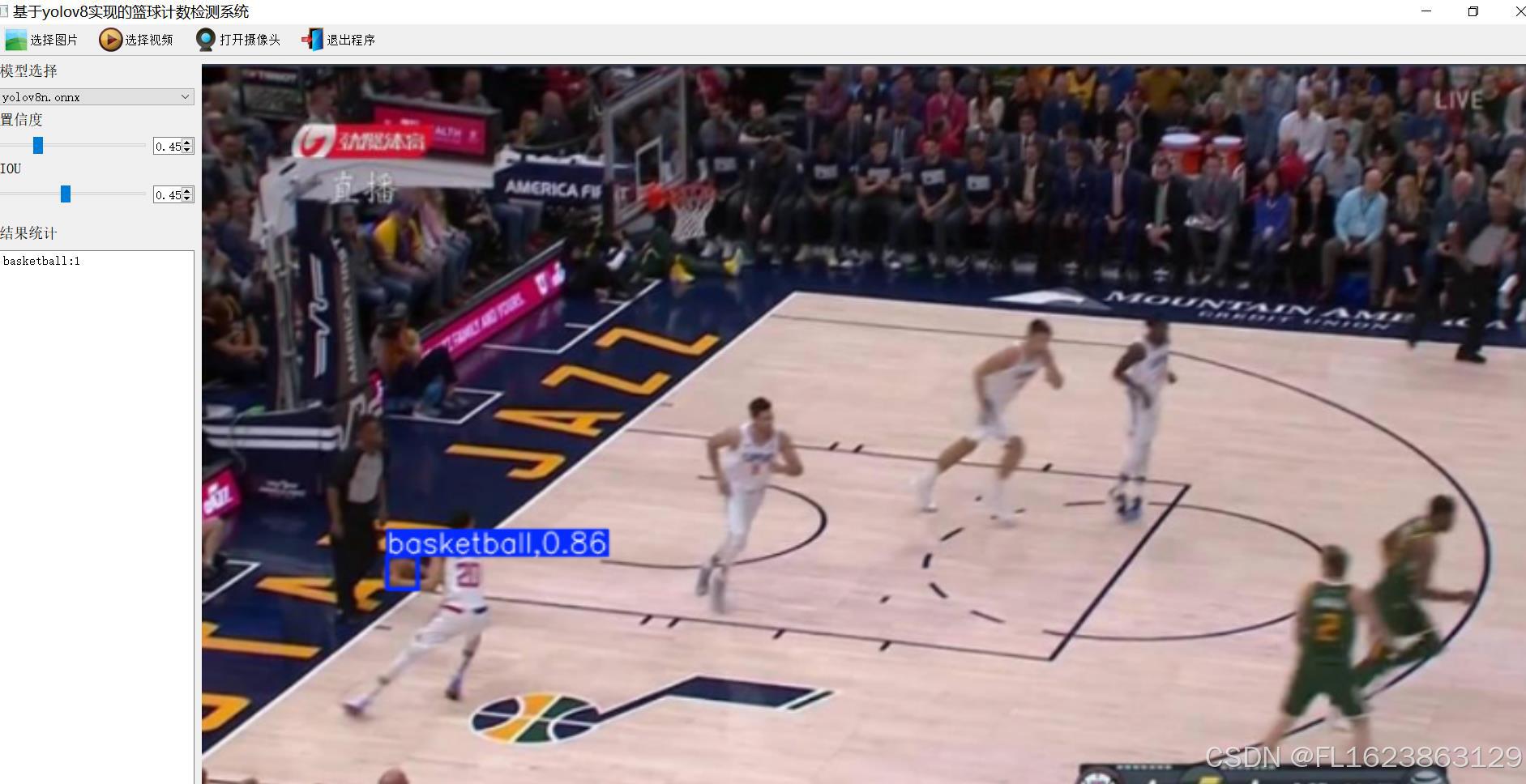文章目录
- 1. AOP是如何收集切面类并封装的?
- 2. Advisor 是什么,它是怎么构建的?
- 3. TargetSource 的构建和作用
- 3.1 TargetSource 的作用
- 3.2 TargetSource 的构建
1. AOP是如何收集切面类并封装的?
在 Spring 中,AOP(Aspect-Oriented Programming,面向切面编程)通过以下几个步骤收集切面类并进行封装:
1. 定义切面类:
- 切面类通过
@Aspect注解来标记,表示这是一个切面。 - 在切面类中定义通知(
advice),例如@Before、@After、@Around等,用于指定在目标方法执行的不同阶段要执行的逻辑。
2. 配置切面扫描:
Spring容器在启动时,会根据配置或注解扫描包路径,寻找带有@Aspect注解的类。- 通过在配置类上添加
@EnableAspectJAutoProxy注解启用AOP自动代理机制。
3. 解析切面类:
Spring使用AspectJAnnotationAutoProxyCreator或类似的类来扫描和解析@Aspect注解的类。- 在解析过程中,
Spring通过反射机制查找切面类中定义的通知方法,并解析这些方法上面的注解,例如@Before、@After等。
4. 创建切面和通知对象:
- 解析切面类后,
Spring会为每个切面创建AspectMetadata对象,并将这些元数据保存在AdvisedSupport类中。 AdvisedSupport持有目标对象(被代理的类)和通知(advice)列表。
5. 织入切面:
- 在
Spring容器创建bean的过程中,如果发现某个bean需要AOP功能,Spring会为其创建代理对象。 Spring使用ProxyFactory或类似的工厂类,根据目标对象和通知列表创建代理对象。- 代理对象会将通知逻辑织入到目标方法的调用链中。
6. 执行代理逻辑:
- 当客户端代码调用代理对象的方法时,代理对象会首先执行切面中的通知逻辑,然后再调用目标方法。
- 例如,在
@Around通知中,可以在目标方法执行前后执行额外的逻辑,或者在@Before通知中执行方法前的逻辑。
具体的执行流程如下图所示:
定义切面类:
@Aspect
@Component
public class LoggingAspect {@Before("execution(* com.example.service.*.*(..))")public void logBefore(JoinPoint joinPoint) {System.out.println("Before method: " + joinPoint.getSignature().getName());}@After("execution(* com.example.service.*.*(..))")public void logAfter(JoinPoint joinPoint) {System.out.println("After method: " + joinPoint.getSignature().getName());}
}
配置切面扫描:
@Configuration
@EnableAspectJAutoProxy
public class AppConfig {// other bean definitions
}
通过以上步骤,Spring AOP 机制能够自动收集、解析和织入切面类,实现面向切面编程的功能。这种机制在保持业务逻辑和横切关注点分离的同时,也提升了代码的可读性和可维护性。
Advisor__76">2. Advisor 是什么,它是怎么构建的?
Advisor_77">2.1 什么是 Advisor
在 Spring AOP 中,Advisor 是包含 Advice 和 Pointcut 的一个概念。Advice 是要执行的具体动作(如方法前、后或环绕方法),而 Pointcut 是定义哪些连接点应该应用这些 Advice 的规则。
Advisor__81">2.2 Advisor 的构建(源码分析+时序图说明)
在 Spring AOP 中,Advisor 的构建是通过 AspectJAdvisorFactory 来实现的。ReflectiveAspectJAdvisorFactory 是 AspectJAdvisorFactory 的一个具体实现。
来看看ReflectiveAspectJAdvisorFactory 的 getAdvisors 方法:
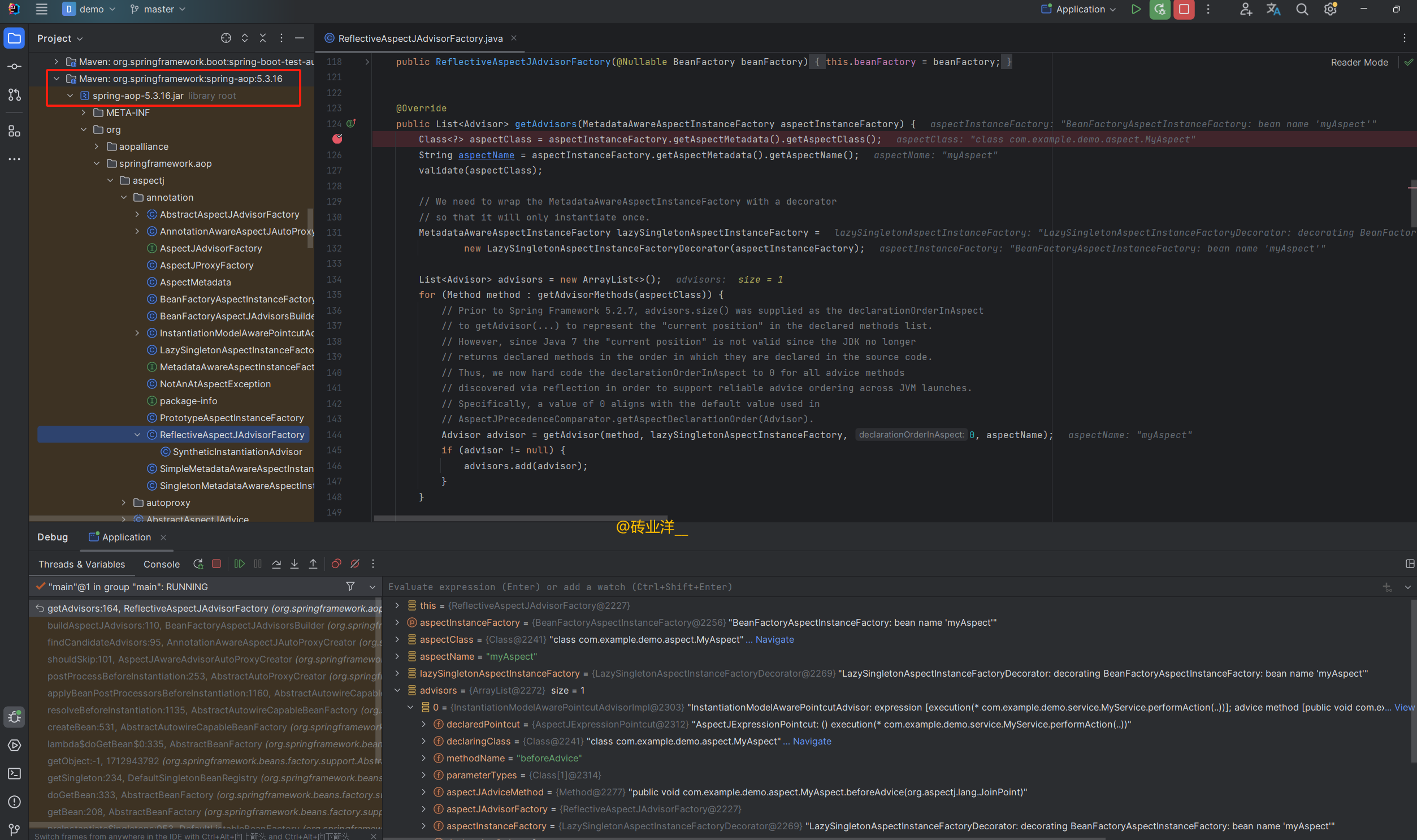
源码提出来分析:
/*** 从给定的 MetadataAwareAspectInstanceFactory 获取所有的 Advisor。* 这个方法会处理切面类的方法和字段,创建相应的 Advisor 列表。** @param aspectInstanceFactory MetadataAwareAspectInstanceFactory 实例,用于获取切面元数据和实例* @return 包含所有 Advisor 的列表*/
@Override
public List<Advisor> getAdvisors(MetadataAwareAspectInstanceFactory aspectInstanceFactory) {// 获取切面类的元数据Class<?> aspectClass = aspectInstanceFactory.getAspectMetadata().getAspectClass();// 获取切面类的名称String aspectName = aspectInstanceFactory.getAspectMetadata().getAspectName();// 验证切面类是否合法validate(aspectClass);// 我们需要用一个装饰器包装 MetadataAwareAspectInstanceFactory,以便它只实例化一次MetadataAwareAspectInstanceFactory lazySingletonAspectInstanceFactory =new LazySingletonAspectInstanceFactoryDecorator(aspectInstanceFactory);// 创建一个保存 Advisor 的列表List<Advisor> advisors = new ArrayList<>();// 遍历切面类的方法,获取所有符合条件的 Advisor 方法for (Method method : getAdvisorMethods(aspectClass)) {// 在 Spring Framework 5.2.7 之前,advisors.size() 被作为 declarationOrderInAspect// 提供给 getAdvisor(...) 以表示在已声明方法列表中的“当前位置”。// 然而,自 Java 7 以来,“当前位置”已不再有效,因为 JDK 不再按源代码中声明的顺序返回声明的方法。// 因此,我们现在将 declarationOrderInAspect 硬编码为 0,以便通过反射发现的所有通知方法,// 以支持 JVM 启动期间的可靠通知排序。// 具体来说,值 0 与 AspectJPrecedenceComparator.getAspectDeclarationOrder(Advisor) 中使用的默认值对齐。Advisor advisor = getAdvisor(method, lazySingletonAspectInstanceFactory, 0, aspectName);if (advisor != null) {// 将 Advisor 添加到列表中advisors.add(advisor);}}// 如果它是每个目标实例化的切面,则发出虚拟实例化的切面if (!advisors.isEmpty() && lazySingletonAspectInstanceFactory.getAspectMetadata().isLazilyInstantiated()) {// 创建并添加一个合成的实例化 Advisor 到列表的开头Advisor instantiationAdvisor = new SyntheticInstantiationAdvisor(lazySingletonAspectInstanceFactory);advisors.add(0, instantiationAdvisor);}// 查找引入字段for (Field field : aspectClass.getDeclaredFields()) {// 获取 DeclareParents 的 AdvisorAdvisor advisor = getDeclareParentsAdvisor(field);if (advisor != null) {// 将 Advisor 添加到列表中advisors.add(advisor);}}// 返回所有的 Advisorreturn advisors;
}/*** 从给定的方法和切面实例工厂获取一个 Advisor。* 这个方法会处理切面类的方法并创建相应的 Advisor。** @param candidateAdviceMethod 候选的通知方法* @param aspectInstanceFactory MetadataAwareAspectInstanceFactory 实例,用于获取切面元数据和实例* @param declarationOrderInAspect 在切面中的声明顺序* @param aspectName 切面名称* @return 对应的 Advisor,如果方法没有对应的 Pointcut 则返回 null*/
@Override
@Nullable
public Advisor getAdvisor(Method candidateAdviceMethod, MetadataAwareAspectInstanceFactory aspectInstanceFactory,int declarationOrderInAspect, String aspectName) {// 验证切面类是否合法validate(aspectInstanceFactory.getAspectMetadata().getAspectClass());// 获取 PointcutAspectJExpressionPointcut expressionPointcut = getPointcut(candidateAdviceMethod, aspectInstanceFactory.getAspectMetadata().getAspectClass());if (expressionPointcut == null) {// 如果没有对应的 Pointcut,则返回 nullreturn null;}// 创建并返回 InstantiationModelAwarePointcutAdvisorImplreturn new InstantiationModelAwarePointcutAdvisorImpl(expressionPointcut, candidateAdviceMethod,this, aspectInstanceFactory, declarationOrderInAspect, aspectName);
}/*** 获取给定方法的 Pointcut。** @param candidateAdviceMethod 候选的通知方法* @param candidateAspectClass 候选的切面类* @return 对应的 AspectJExpressionPointcut,如果方法没有对应的 AspectJ 注解则返回 null*/
@Nullable
private AspectJExpressionPointcut getPointcut(Method candidateAdviceMethod, Class<?> candidateAspectClass) {// 查找方法上的 AspectJ 注解AspectJAnnotation<?> aspectJAnnotation =AbstractAspectJAdvisorFactory.findAspectJAnnotationOnMethod(candidateAdviceMethod);if (aspectJAnnotation == null) {// 如果方法没有对应的 AspectJ 注解,则返回 nullreturn null;}// 创建 AspectJExpressionPointcutAspectJExpressionPointcut ajexp =new AspectJExpressionPointcut(candidateAspectClass, new String[0], new Class<?>[0]);// 设置 Pointcut 表达式ajexp.setExpression(aspectJAnnotation.getPointcutExpression());if (this.beanFactory != null) {// 如果 beanFactory 不为空,则设置 beanFactoryajexp.setBeanFactory(this.beanFactory);}// 返回 AspectJExpressionPointcutreturn ajexp;
}
这些源码的关键总结如下:
一. 获取所有 Advisor (getAdvisors 方法)
1. 提取切面元数据:
- 获取切面类和切面名称,这些信息是从
MetadataAwareAspectInstanceFactory中提取的。
2. 装饰工厂:
- 用
LazySingletonAspectInstanceFactoryDecorator包装原始工厂,这样可以确保切面实例只会被创建一次(懒加载)。
3. 处理通知方法:
- 遍历切面类中的所有方法,检查每个方法是否是通知方法(如
@Before、@After等)。 - 对每个通知方法调用
getAdvisor方法,创建相应的 Advisor 对象,并将其添加到列表中。 getAdvisor方法通过解析方法上的注解来创建AspectJExpressionPointcut,然后将其与通知方法一起封装成InstantiationModelAwarePointcutAdvisorImpl对象。
4. 处理懒加载的切面:
5. 处理引入增强:
- 遍历切面类中的所有字段,检查是否有引入增强(
@DeclareParents注解)。 - 对每个引入增强字段,调用
getDeclareParentsAdvisor方法,创建相应的Advisor对象,并将其添加到列表中。
6. 返回所有 Advisor:
二. 获取单个 Advisor (getAdvisor 方法)
1. 验证切面类:
- 确保传入的切面类是有效的切面。
2. 获取 Pointcut:
- 通过解析方法上的
AspectJ注解(如@Before、@After),创建AspectJExpressionPointcut对象。 - 如果方法没有相应的注解,则返回
null。
3. 创建 Advisor:
- 将
AspectJExpressionPointcut和通知方法封装成InstantiationModelAwarePointcutAdvisorImpl对象。 - 返回创建的
Advisor对象。
三. 获取 Pointcut (getPointcut 方法)
1. 查找方法上的 AspectJ 注解:
- 检查给定的方法是否有
AspectJ注解(如@Before、@After)。
2. 创建 Pointcut:
- 如果找到了
AspectJ注解,则创建AspectJExpressionPointcut对象,并设置相应的切入点表达式。 - 如果存在
beanFactory,则设置beanFactory。
3. 返回 Pointcut:
- 返回配置好的
AspectJExpressionPointcut对象,如果没有找到注解,则返回null。
简要总结
getAdvisors方法从切面工厂中提取元数据,装饰工厂以实现懒加载,处理切面类中的通知方法和引入增强,最终返回所有的Advisor。getAdvisor方法根据通知方法创建相应的Advisor,并将其与Pointcut结合起来。getPointcut方法通过解析方法上的注解来创建并配置Pointcut,用于在指定的连接点上应用通知。
时序图如下:
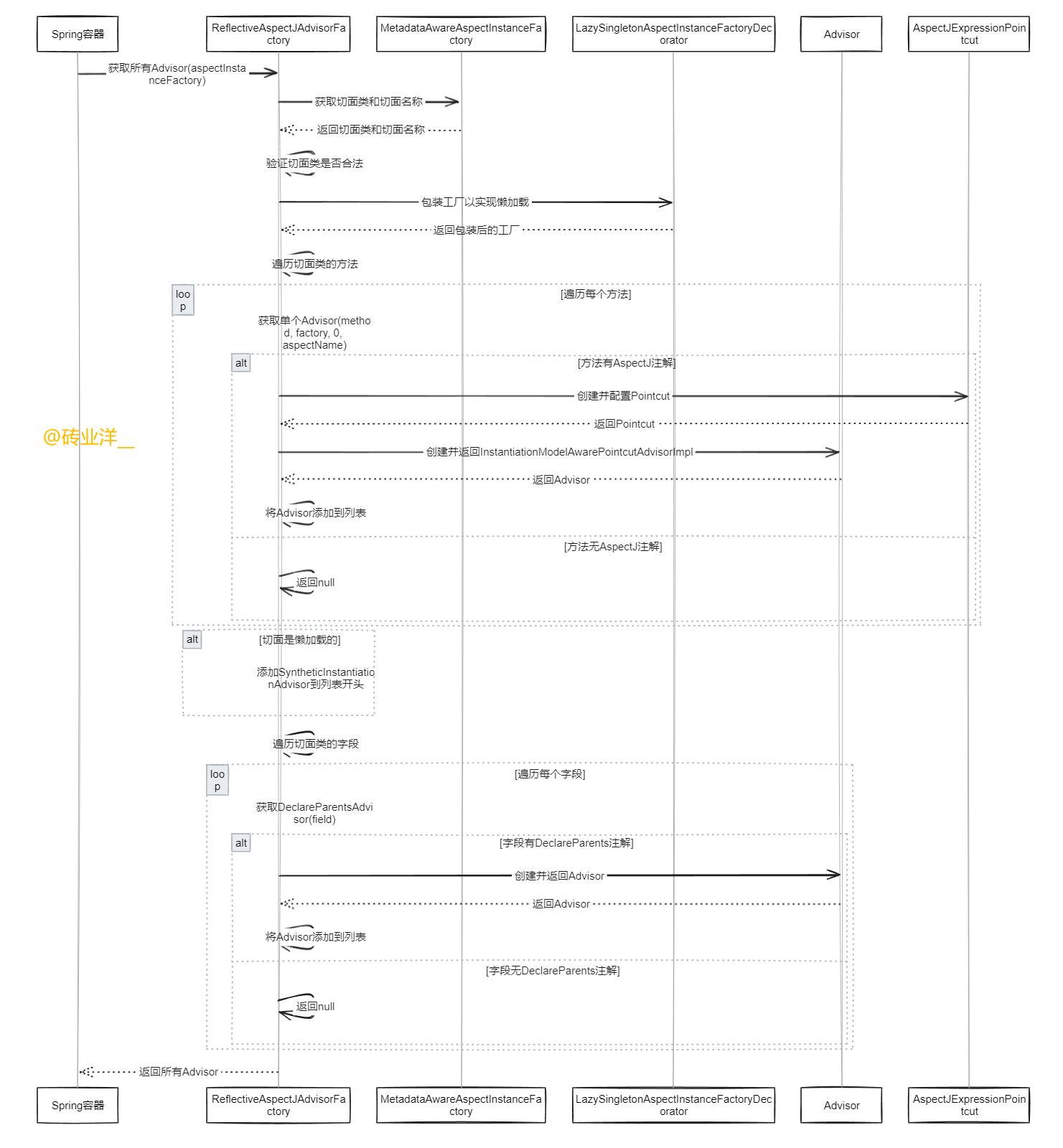
关键步骤说明
- 获取所有 Advisor:由
Spring容器发起,调用ReflectiveAspectJAdvisorFactory的getAdvisors方法。 - 获取切面类和切面名称:从
MetadataAwareAspectInstanceFactory中提取切面类和切面名称。 - 验证切面类是否合法:确保切面类是有效的。
- 包装工厂以实现懒加载:使用
LazySingletonAspectInstanceFactoryDecorator包装工厂。 - 遍历切面类的方法:逐个检查每个方法,是否包含
AspectJ注解。 -
- 方法有 AspectJ 注解:创建
AspectJExpressionPointcut,并与方法封装成InstantiationModelAwarePointcutAdvisorImpl。
- 方法有 AspectJ 注解:创建
-
- 方法无 AspectJ 注解:跳过该方法。
- 切面是懒加载的:添加
SyntheticInstantiationAdvisor到Advisor列表开头。 - 遍历切面类的字段:检查每个字段是否包含
DeclareParents注解。 -
- 字段有 DeclareParents 注解:创建相应的
Advisor。
- 字段有 DeclareParents 注解:创建相应的
-
- 字段无 DeclareParents 注解:跳过该字段。
- 返回所有 Advisor:将包含所有
Advisor的列表返回给Spring容器。
TargetSource__306">3. TargetSource 的构建和作用
在 Spring AOP 中,TargetSource 是一个重要的概念,它用于描述 AOP 代理的目标对象。目标对象是被代理对象,即实际执行业务逻辑的对象。TargetSource 定义了如何获取这个目标对象以及它的生命周期管理。
TargetSource__309">3.1 TargetSource 的作用
-
获取目标对象:
TargetSource提供了获取目标对象的机制,代理对象在执行方法调用时,通过TargetSource获取实际的目标对象。 -
目标对象的生命周期管理:
TargetSource负责目标对象的生命周期管理,比如创建、缓存、销毁等。 -
支持多种代理模式:通过不同的
TargetSource实现,可以支持不同的代理模式,比如单例、多例、懒加载等。
常见的 TargetSource 实现
1. SingletonTargetSource:单例目标源,目标对象是单例的,每次获取的都是同一个实例。
2. PrototypeTargetSource:原型目标源,每次获取目标对象时,都会创建一个新的实例。
3. LazyInitTargetSource:懒加载目标源,目标对象只有在第一次使用时才会被创建。
TargetSource__326">3.2 TargetSource 的构建
核心类与方法
- AdvisedSupport:这个类持有
TargetSource和其他AOP配置。 - ProxyFactory:这个类用于创建
AOP代理。 - AopProxy:具体的代理实现类(如
JdkDynamicAopProxy和CglibAopProxy)。
AdvisedSupport 是 Spring AOP 框架中一个核心的配置类,它持有 TargetSource,以及其他关于 AOP 的配置。下面是一些关键代码片段:
public class AdvisedSupport extends ProxyConfig implements Advised {// 持有的 TargetSource 实例private TargetSource targetSource = EmptyTargetSource.INSTANCE;// 设置 TargetSourcepublic void setTargetSource(TargetSource targetSource) {this.targetSource = (targetSource != null ? targetSource : EmptyTargetSource.INSTANCE);}// 获取 TargetSourcepublic TargetSource getTargetSource() {return this.targetSource;}// 其他相关配置和方法
}
ProxyFactory 类用于创建 AOP 代理。它继承自 AdvisedSupport,所以可以直接访问 TargetSource。
相关的类用一张图说明:
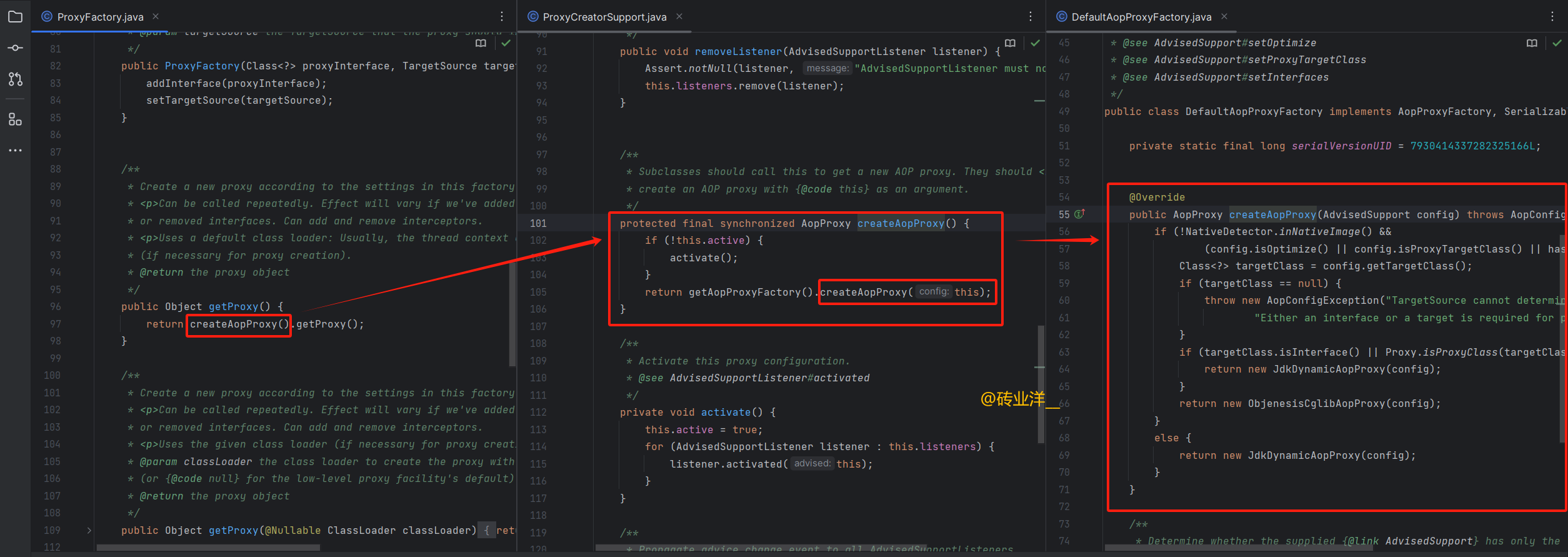
代码提出来分析
/*** 根据此工厂中的设置创建一个新的代理。* <p>此方法可以重复调用。如果我们添加或删除接口,效果会有所不同。* 可以添加和删除拦截器。* <p>使用默认的类加载器:通常是线程上下文类加载器(如果代理创建需要)。* @return 代理对象*/
public Object getProxy() {// 调用 createAopProxy() 方法创建 AOP 代理,然后调用其 getProxy() 方法返回代理对象return createAopProxy().getProxy();
}/*** 创建一个新的 AOP 代理。子类应调用此方法来获取新的 AOP 代理,而不应直接使用 this 作为参数创建 AOP 代理。* @return 新的 AOP 代理*/
protected final synchronized AopProxy createAopProxy() {// 如果代理还没有激活,则激活代理if (!this.active) {activate();}// 调用 AopProxyFactory 的 createAopProxy 方法创建新的 AOP 代理return getAopProxyFactory().createAopProxy(this);
}/*** 根据 AdvisedSupport 配置创建一个 AOP 代理。此方法决定使用哪种代理实现(JDK 动态代理或 CGLIB 代理)。**/
@Override
public AopProxy createAopProxy(AdvisedSupport config) throws AopConfigException {// 检查是否在原生镜像中执行,以及是否优化、代理目标类或没有用户提供的代理接口if (!NativeDetector.inNativeImage() &&(config.isOptimize() || config.isProxyTargetClass() || hasNoUserSuppliedProxyInterfaces(config))) {// 获取目标类Class<?> targetClass = config.getTargetClass();// 如果目标类为空,抛出 AopConfigException 异常if (targetClass == null) {throw new AopConfigException("TargetSource 无法确定目标类: " +"创建代理需要一个接口或目标对象。");}// 如果目标类是接口或代理类或 lambda 表达式,使用 JdkDynamicAopProxyif (targetClass.isInterface() || Proxy.isProxyClass(targetClass) || AopProxyUtils.isLambda(targetClass)) {return new JdkDynamicAopProxy(config);}// 否则,使用 ObjenesisCglibAopProxyreturn new ObjenesisCglibAopProxy(config);} else {// 默认使用 JdkDynamicAopProxyreturn new JdkDynamicAopProxy(config);}
}
getProxy 方法是调用 createAopProxy() 方法创建 AOP 代理对象,然后调用创建的 AOP 代理对象的 getProxy() 方法返回实际的代理对象。
createAopProxy 方法首先检查代理是否已激活,如果未激活则调用 activate() 方法激活代理。调用 getAopProxyFactory().createAopProxy(this) 方法,通过 AopProxyFactory 创建新的 AOP 代理对象。
createAopProxy 方法过程如下:
- 检查是否在原生镜像中执行,以及是否需要优化、代理目标类或没有用户提供的代理接口。
- 获取目标类,如果目标类为空,抛出
AopConfigException异常。 - 如果目标类是接口、代理类或
lambda表达式,使用JdkDynamicAopProxy创建代理。 - 否则,使用
ObjenesisCglibAopProxy创建代理。 - 如果不满足上述条件,默认使用
JdkDynamicAopProxy。
下面时序图是说明 TargetSource 在 Spring AOP 中的构建和使用过程:
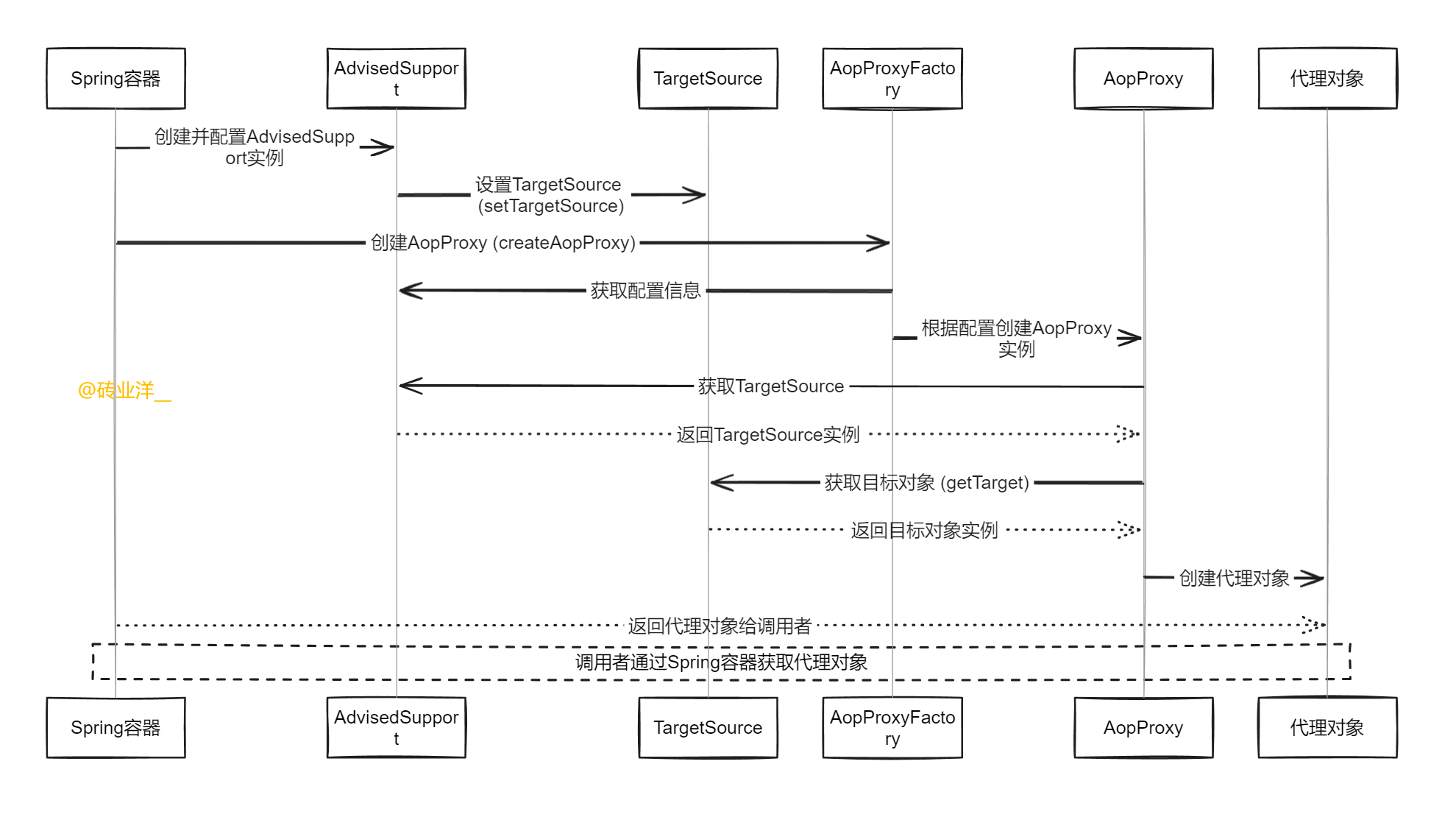
关键步骤说明
1. 创建并配置 AdvisedSupport 实例:
Spring容器创建一个AdvisedSupport实例,并根据配置设置其属性,包括TargetSource。
2. 设置 TargetSource:
- 在
AdvisedSupport实例中设置TargetSource,它定义了如何获取目标对象。
3. 创建 AopProxy:
Spring容器调用AopProxyFactory创建AopProxy实例,传递AdvisedSupport作为配置。
4. 获取配置信息:
AopProxyFactory从AdvisedSupport获取创建AopProxy所需的配置信息。
5. 根据配置创建 AopProxy 实例:
AopProxyFactory根据AdvisedSupport配置决定使用哪种AopProxy实现(如JdkDynamicAopProxy或CglibAopProxy),并创建AopProxy实例。
6. 获取 TargetSource:
AopProxy从AdvisedSupport中获取TargetSource实例。
7. 获取目标对象:
AopProxy调用TargetSource的getTarget方法获取实际的目标对象实例。
8. 创建代理对象:
AopProxy使用目标对象创建代理对象。
9. 返回代理对象:
AopProxy将创建的代理对象返回给Spring容器。
10. 返回代理对象给调用者:
Spring容器将代理对象返回给调用者。
欢迎一键三连~
有问题请留言,大家一起探讨学习
----------------------Talk is cheap, show me the code-----------------------

